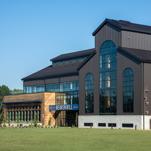Carter, Take Two and the Art of the Fish-Out-of-Water Procedural
Photo: ABC/Jack Rowand
In an era of “peak TV” or “too much television” or whatever you want to call it, it’s easy for lighter fare to fall through the cracks between prestige programming. So you might have missed that this summer has brought us two very similar—but still very charming—new series, both easy, breezy crime procedurals.
First up, there’s WGN America’s Canadian transplant, Carter. Jerry O’Connell plays a TV actor named Harley Carter, with his own procedural, Call Carter, where he plays “Charlie Carter” and the whole show-within-a-show is loosely based on his life. After getting embarrassed on the red carpet by his wife, Winter Wood (Brooke Nevin), and his former Hollywood best friend—causing a scene after he learns that the two had an affair—Harley returns to his small hometown and almost immediately starts helping his childhood best friend-turned-detective, Sam Shaw (Sidney Poitier Heartsong), solve homicides.
-

-

-

-

-

-

-

-

-

-

-

-

-

-

-

-

-

-

-

-

-

-

-

-

-

-

-

-

-

-

-

-

-

-

-

-

-

-

-

-








































